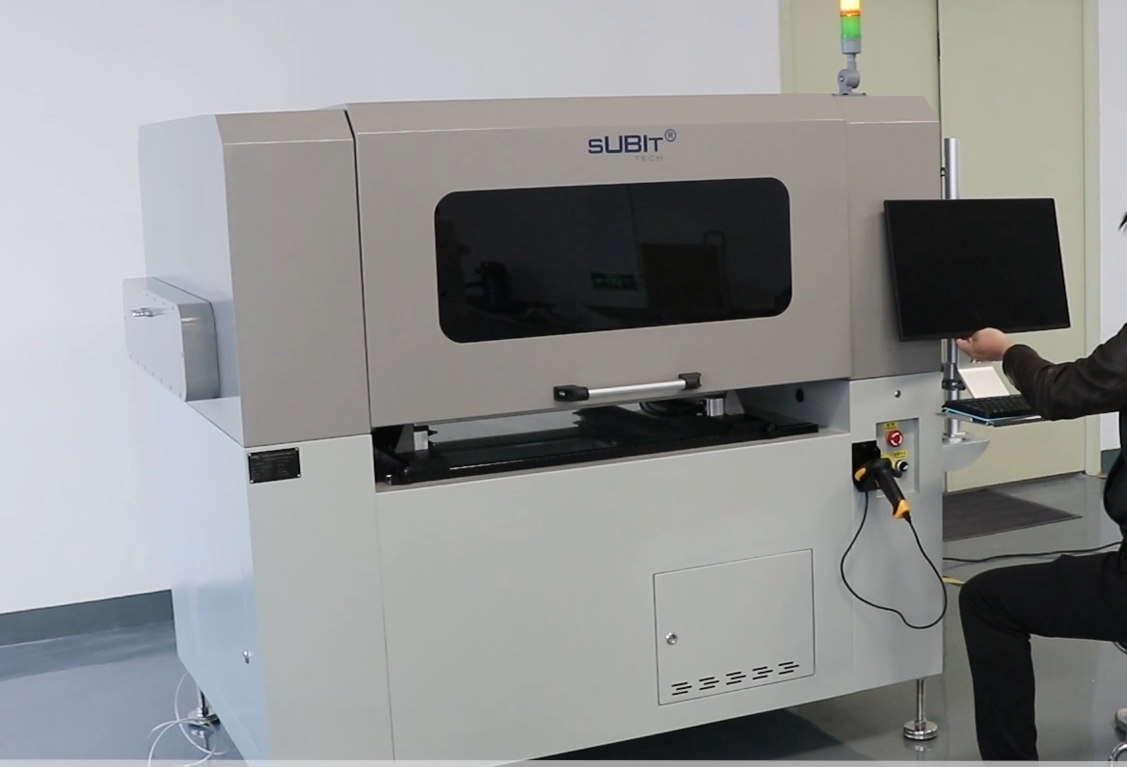
News Center
Stencil Inspection Machine: A Key Player in the PCB Manufacturing Process
 2025-06-18
2025-06-18 165
165
Stencil Inspection Machine: A Key Player in the PCB Manufacturing Process
In modern printed circuit board (PCB) manufacturing, precision is paramount. One of the critical components of ensuring high-quality PCBs is the stenciling process, where solder paste is applied to the PCB before the components are placed. To ensure that this process is done correctly and efficiently, Stencil Inspection Machines (SIMs) are employed. These machines help detect defects in the stenciling process, reducing the risk of faulty assemblies that could affect the performance and reliability of the final product.
What is a Stencil Inspection Machine?
A Stencil Inspection Machine is a sophisticated piece of equipment used in the PCB assembly line to inspect the solder paste application process. It checks whether the right amount of solder paste has been deposited, ensuring that it is accurately applied to each pad of the PCB in the correct size and position. The inspection process is crucial because improper solder paste deposition can lead to issues like bridging, cold solder joints, or insufficient solder, which can cause component failure.
How Does a Stencil Inspection Machine Work?
The working principle of a Stencil Inspection Machine involves several advanced technologies, including optical inspection, laser scanning, and 3D imaging. Here's how it works:
Optical Inspection: Cameras mounted on the machine capture high-resolution images of the PCB. These images are then compared to pre-programmed standards to detect any discrepancies in the solder paste application.
3D Imaging: Some advanced Stencil Inspection Machines utilize 3D imaging technology to measure the height and volume of the solder paste deposits. This ensures that the paste is applied with the correct thickness and uniformity, which is essential for a reliable solder joint.
Laser Scanning: Laser sensors are often used to detect minute variations in the paste’s height and shape, providing an additional layer of accuracy in the inspection process.
Error Detection: The system automatically flags any defects such as excess solder paste, missing paste, misaligned paste, or uneven distribution. These errors are often categorized into different types, allowing operators to address specific issues in the assembly process.
Benefits of Using a Stencil Inspection Machine
Improved Quality Control: The primary benefit of using a Stencil Inspection Machine is the ability to maintain consistent quality. By detecting defects early in the process, manufacturers can address issues before they affect the final product, minimizing the likelihood of assembly errors and enhancing the overall quality of the PCBs.
Reduced Rework and Scrap: By catching defects in the stenciling process, SIMs help reduce the need for rework and scrap, saving manufacturers both time and money. This also contributes to higher efficiency in the production line.
Enhanced Productivity: Automated stencil inspection speeds up the inspection process compared to manual checks, which would be time-consuming and prone to human error. With a SIM, the inspection process is fast and accurate, leading to increased productivity.

Consistency Across Production Batches: Using a SIM ensures that the quality of solder paste deposition remains consistent across multiple production runs. This is particularly crucial for large-scale manufacturing where uniformity is key to maintaining product performance.
Types of Stencil Inspection Machines
2D Stencil Inspection Machines: These machines use high-resolution cameras to capture 2D images of the solder paste. While they are useful for detecting basic defects, they have limitations in capturing the height and volume of the paste.
3D Stencil Inspection Machines: These machines are more advanced and capable of inspecting the height, volume, and shape of the solder paste. 3D inspection is especially beneficial for high-precision applications where even minute variations in paste deposition can lead to defects.
Hybrid Inspection Systems: Some modern systems combine both 2D and 3D technologies for more comprehensive inspection. These systems offer the benefits of both approaches, ensuring high-quality results with greater accuracy.
Conclusion
Stencil Inspection Machines play a pivotal role in modern PCB manufacturing by ensuring the accuracy and consistency of solder paste deposition. By leveraging advanced technologies like optical inspection, 3D imaging, and laser scanning, these machines help manufacturers detect defects early in the production process, improving overall product quality, reducing rework, and enhancing productivity. With the growing demand for precision electronics, the importance of SIMs in the manufacturing process will only continue to increase, making them an indispensable tool for the PCB industry.
Previous: Why Choose Our Integrated Screen Stretching Machine? What advantages Compared To Conventional One? Next: no more






